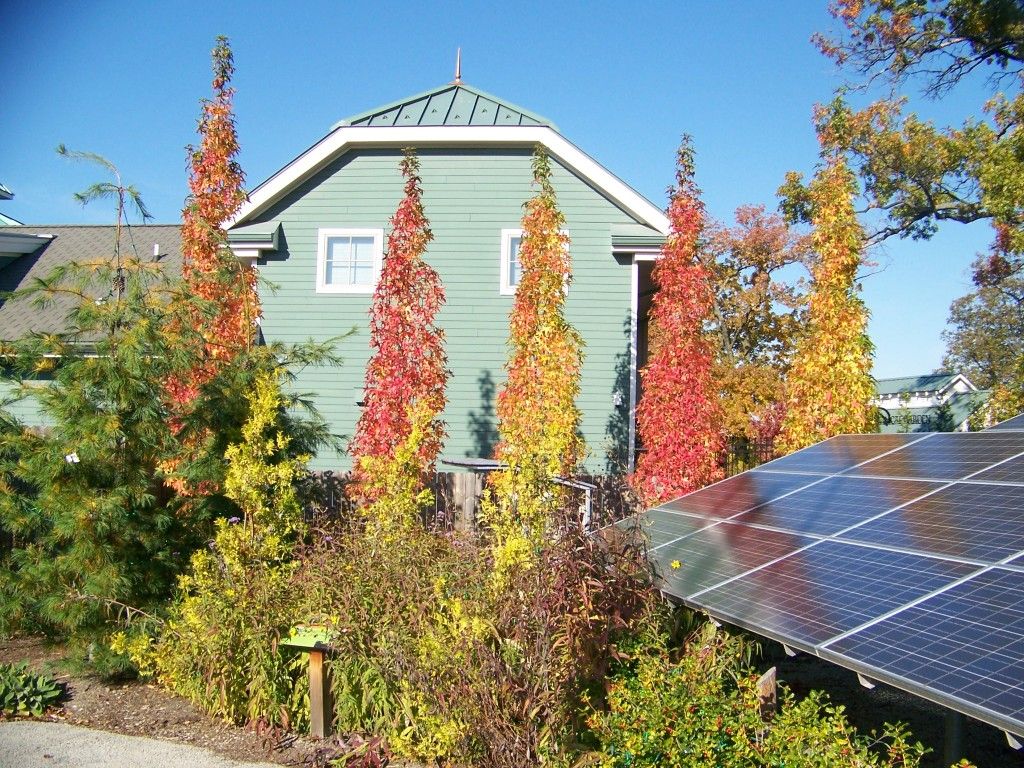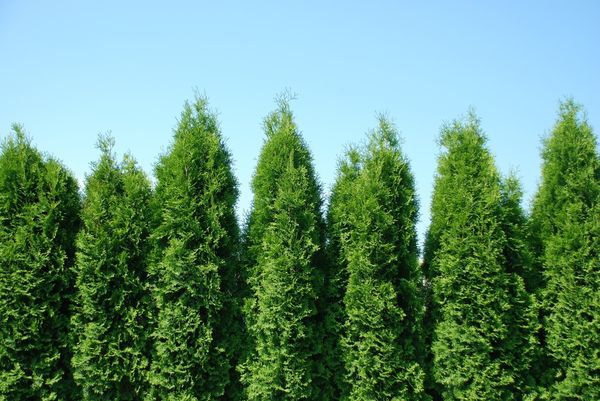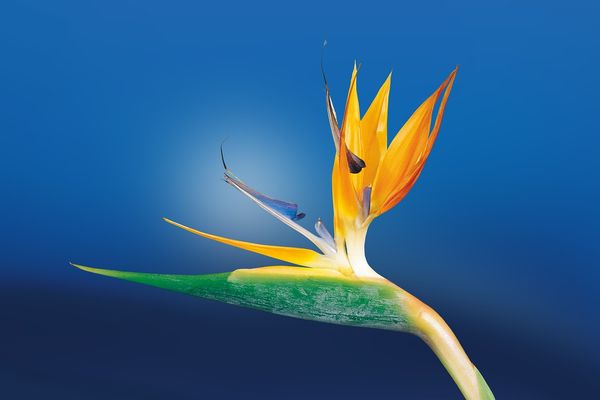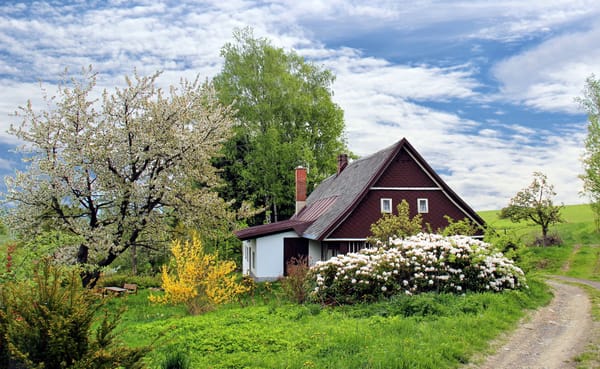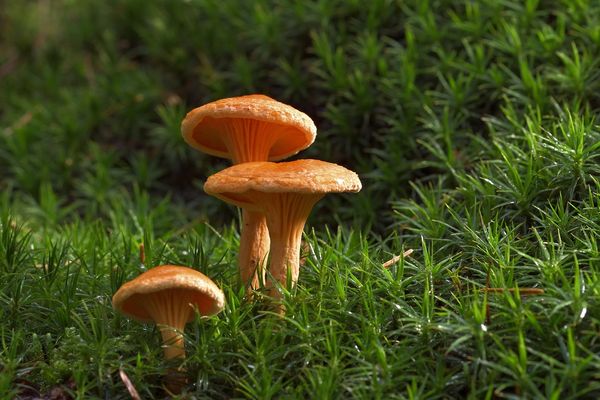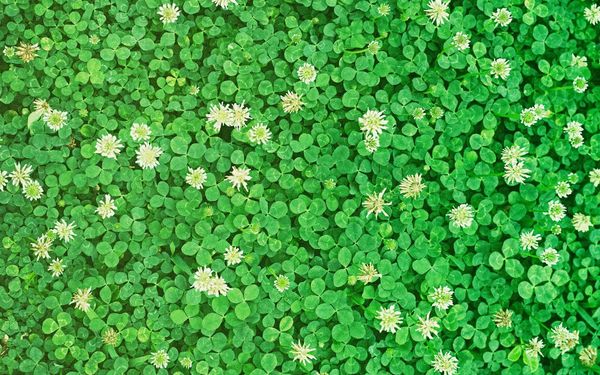Whether you're looking for privacy or simply want to create a fresh canvas for your yard, it's always smart to include trees in your landscaping plan. Trees provide depth and intrigue. Plus, they can also help with shade, seclusion and curb appeal. But not all trees work well in every location.
Fortunately, trees come in various forms, dimensions, and hues. This is particularly advantageous if you're searching for trees that fit into a small area or serve a specific function, such as a privacy barrier.
This is where landscaping with tall, thin columnar trees comes in. These majestic specimens nearly grew into being planted as living privacy walls or to exude majesty and formality. They also serve as eye-catching accent plants in small and big garden areas.
Narrow Trees for Landscaping
Slender trees can be used in landscaping in a variety of ways. We'll cover the best ones for various garden designs and back yards.
The below questions might assist you in deciding which tree type is appropriate for your yard:
- What will this tree be used for? (Ornamental or privacy)
- Which style of tree do I like? (Evergreen or Deciduous)
- How should it look and appear? (Texture, color, etc.)
- Does it fit in my yard? (Size, maturity, etc.)
- Do I want minimal maintenance? Pruning, fertilizing, and watering
Please compare the following trees to the questions as I explain them. You may have discovered the finest option by the time you reach the final option.
Narrow Evergreens for Privacy and Screening
No matter what the seasons are doing, evergreens retain their beauty and unwavering tenacity.
They provide attractive shapes with year-round green hues for landscape design. If you have a chance to reside farther north, you may also be aware of how well these large trees, when planted in a row, shield and defend your house not just from any prying eyes but also—and maybe more importantly—from strong winds, rain, and snow.
Deciduous plants are put on a better display. On some, leaves start one hue, develop into another, and finish the season with a stunning autumnal display.
Others grow attractive fruit and flowers that provide animals with food and shelter. While also producing a vertical effect with striking heights and breadth, much like evergreens.
Columnar deciduous trees may be used as inviting accents around gates and entrance ways and privacy barriers from neighbors.
Skinny Columnar Tree Spacing
Columnar trees need adequate spacing, which includes:
- How far away from your house or other building should each be planted?
- How far apart should they be planted so that they may grow to be a privacy screen?
The kind of tree will determine the solution. Columnar trees should be spaced two-thirds of their mature width apart for optimal results. Your fresh sapling should be placed that distance from your house.
Narrow Columnar Deciduous Trees
A tree is more suited to tiny places the narrower its development is. Thin, columnar trees provide drama, seclusion, and shade when required, thanks to their small footprint and extensive root system, not to mention clever design planning, which draws the eye upward to provide the impression of space.
These are not restricted in their adaptability but make a powerful statement in bigger landscapes. Evergreens provide permanent structure and color even when the rest of your landscape is dormant. The same is provided by deciduous varieties in the winter, but with added seasonal interest and striking architectural shape.
1. Slender Silhouette Sweetgum Tree
A graceful 50-feet tall, the slender Sweetgum is a deciduous ornamental tree. However, in zones 5-8, with just a 4-foot broad silhouette. In the spring, tiny white blooms are scattered among the bright green, star-shaped leaves resembling maple leaves.
Autumn brings out the brilliant under-pigments of crimson, gold, copper, and plum in Sweetgum leaf. The tree's bark has deep natural furrows that get deeper with age, and the flowers grow into little, spiky balls often utilized in autumn décor.
These trees grow best in wet, well-draining soil with a wide pH range of 5.0–7.4 and full sun to light shade.
2. Poplar Tree of Lombardy
A line of Lombardy poplars looks like a series of enormous pegs across the landscape, with the lowest 3ft of the trunk remaining naked.
As it can reach a height of 60 feet & a width of 10-15 feet (at a rate of 6 feet per year! ), this large tree is frequently used to construct weatherproof property borders. These trees have rounded, triangular leaves and long, tubular clusters of dark pink or white flowers in the summer and fall, which develop into pea-sized seed pods. Poplars like full sun and 4.5–8.5 in good, well-draining soil.
3. Maple Armstrong Gold
The elegant Armstrong gold is unbeatable for stunning autumn color plumes that seem to emerge directly from the ground.
Thick, lush green foliage on dark red branches develops in the spring. In the summer, it becomes lighter and turns butter-yellow and pumpkin-colored. Small, crimson blossoms that resemble maple seed pods seem to have wings.
These unusual maples mature at 40 feet and have a spread of 12 feet. These deciduous privacy barriers are a great option for zones 4-9. Despite having fewer leaves than wide-growing Maple varieties, they are still good choices.
Full light and acidic, well-draining soil will encourage strong growth and the best leaf color.
4. Ginkgo Columnar Tree
This Ginkgo, which tolerates dryness, has bright color without requiring much-growing space. At a pace of 12–18 inches each year, the columnar Ginkgo can reach 50 feet. However, in zones 3–9, they may be maintained at a more manageable size.
Strong branches are covered with broad, delicate leaves in the form of fans that appear in the spring as light green and mature to a rich, golden color by the end of the year. Stunning, natural architecture can resist temperatures as low as -40°F/C in the winter.
Ginkgos appreciate well-drained loam with a pH range of 5.0 to 8.0 and full sun to light shade.
5. Golden Falls Redbud Tree
On the sole weeping species of the Redbud family, lilac-pink blossoms herald the arrival of spring.
After the spring blossoms have faded, light green leaves (also specific to Redbuds) that are tinged with copper will appear. Even in the warmest summers of zones 5 to 9, they all retain their color beautifully.
A single, upright trunk grows to a height of 10 feet, and branches with a low arch spread out to a width of 4 feet. This creates breathtaking contrast in a varied garden without infringing on the area with extreme height.
Full to partial sunlight and rich, constantly wet soil is preferred by weeping redbuds. However, they adapt well to most planting situations and grow well in containers.
6. DannaSpire Columnar Elm Tree
The DannaSpire Elm's straight, tidy branches remain near the tree's primary stem. Making allow for modest underplantings while achieving a look ideal for lining property boundaries and front house elevations.
In zones 5-9, this enormous Elm cultivar develops to be 25 feet tall by 5 feet wide at a pace of 3-6 feet each year. It was giving off a powerful, erect presence in the autumn that shimmers with many tones of yellow, peach, and orange.
Despite being adaptable to most soil types, elm trees enjoy direct sunlight. This elm cultivar is a wise option since it resists Dutch elm disease.
7. Beacon Swamp White Oak Tree
The Beacon Swamp is one of the few white oaks that can grow to a majestic size of 35 feet by 16 feet while tolerating damp circumstances and having a unique columnar form.
Light, beryl-colored foliage emerges in the spring and gradually becomes a lush green during the growing season. Following that, in the fall, these glossy, lobed leaves develop a brilliant, golden-yellow tint and become studded with tiny, hanging acorns.
In zones 4–8, the Beacon Oak reacts with the best growth and vigor to whole/partial light and well-draining soil while tolerating compacted soil and bog conditions.
8. Sky Tower Ginkgo Tree
The Sky Tower is a descendant of ancient trees that grew during the period of the dinosaurs, much like the columnar ginkgo tree. This almost neon cultivar is becoming common in many confined spaces where upright growth is desired.
The Sky Tower ginkgo, which may grow 20 feet tall and 8 feet wide, is a standard option for privacy barriers. Additionally, in zones 3 through 9, hardy height and dimension may be added to spacious, open gardens.
This ginkgo cultivar does well in full sun, well-drained soil, and climates ranging from hot and muggy to -30°F (-34°C).
9. Parkland Pillar Birch Tree
This thin tree's stunning hue will give you the impression that you are entering a national park as soon as you walk outside.
The Parkland Birch has thick, upright growth that measures 40 feet by 7 feet and has the well-known "exfoliating" white bark. The lush foliage creates a magnificent fall display, changing from the deepest greens to an iridescent gold that captures and reflects the afternoon light.
When trees are positioned such that their foliage receives whole light, this hue is at its most brilliant. In direct sunlight, roots near the surface are quickly scorched.
10. Crimson Pointe Purple Leaf Plum Tree
The thin Crimson Pointe Plum tree is a beautiful tree with a captivating tale. Did you know that if a Purple leaf plum cultivar is planted in poor soil, it will have a narrow growth habit?
This Crimson Point blooming will reach a height of 25 feet in a columnar shape. However, keep the breadth at only 6 feet. In the spring, delicately perfumed blossoms appear before dark plum leaves. This adds a lovely touch to primarily green areas.
This slender fruiter will grow at a pace of 1-2 feet per year in whole light and constantly wet (but not saturated) soil.
Tall Skinny Evergreen Trees
In certain places of the globe, it is usual to see lush woods with tall evergreens. It is giving birth to the phrase "leaders, describes those who go there solely to watch nature's evergreen and deciduous tree tapestry in the fall.
Tall, thin evergreens nearby provide much more than simply aesthetics. These delicate individuals are perfect for foundation plantings, privacy screens, and showpiece trees.
Some cultivars have tiny enough root systems to thrive in pots, while others may be used as a hedge or shrub border. Creating a stunning, alive frame for entrances, gates, and lengthy roads.
11. Leyland Cypress Tree
The Leyland cypress is a close relative of the Italian species and has the same fan-shaped leaf on densely growing branches but with a significantly greater girth. One of the narrowest evergreens with the quickest growth is this one.
The low-maintenance Leyland may grow up to 4 feet in size every year, even in poor soil, and matures at 60 to 70 feet tall and 25 feet wide. There isn't a better privacy screen option.
Thick sprays of blue-green leaves spiral around each branch when grown in zones 6–10 with healthy, well-draining soil and full or partial light. They don't mind a little bit of warm weather.
12. Emerald Green Arborvitae
A conical conifer that prefers cooler climates and is better suited for privacy screens and feature plantings in constrained locations is the Emerald Arborvitae.
The Emerald green only grows to be 15 feet tall and 4 feet wide but performs just as well and is easier to prune than more significant types.
On an Arborvitae, the development of the leaves is more polished. Deep green sprigs spread out into broader fans as they draw closer together. Giving each tree a more fluid and varied look in terms of color.
Mainly when grown in zones 3–8, full or partial light, and constantly wet, well-draining soil.
13. American Arborvitae
The American Arborvitae cultivar loves the same environment (zones 3-8) as the Emerald if you prefer Arborvitae but need something bigger. However, it expands to a considerably larger size.
When fully mature, this American Arborvitae may reach heights of 60 feet and widths of 15 feet. Trimming is far less essential because it grows more slowly than an emerald. The same luxuriant greenery is delivered with exquisite movement and color variation.
In general, Arborvitae grows well in a variety of soil types. However, wet, well-draining loams are optimal for growing. This thick, columnar evergreen, which may reach heights of 20 feet and a width of 7 feet, produces lovely blue-green berries in the autumn.
14. Brodie Eastern Red Cedar Tree
The resilient and trustworthy cedar is yet another excellent option. Proven Winners initially developed the Brodie Eastern to withstand challenging weather zones 3-9. They wanted it to be drought-tolerant, pest-resistant, and resistant to deer.
This thick, columnar evergreen, which may reach heights of 20 feet and a width of 7 feet, produces lovely blue-green berries in the autumn. In only ten years, young saplings will have halved that height.
When planted in full or partial light and wet, well-draining soil, the Brodie Cedar will grow rich and green without annual trimming. However, it won't grow as quickly as an Emerald Arborvitae.
15. Blue Atlas Cedar Tree
The Blue Atlas Cedar is still durable and dependable and has a distinct appearance. The foliage develops as clusters of delicate, silver-blue needles that grow on opposite sides of long, arching branches, maintaining a tall, narrow shape. Seed cones in zones 6–8 form in late summer, giving this tree a classic winter aspect.
The Blue Atlas likes soil that drains well and has direct sunlight. If you plant it there, f you plant it there, f you plant it there, f you plant it there, you plant it there, It will offer subtle height and drama to your front doorway. It will have the space to expand without putting pressure on your foundations with a 40' clearance from your house.
16. Slender Hinoki Cypress
When it comes to unique appearance, the Hinoki Cypress will not be surpassed. The Slender Hinoki has slender, outward-reaching branches on a very tall, visible stem, contrasting Italian and Leyland varieties.
Each branch of the Hinoki is covered with flat sprays of yellow-green that resemble water ferns. These flat sprays take on a slight burgundy tint with the late fall.
In zones 4–8, this Cypress cultivar grows to a mature size of 12 feet by 5 feet. It will quickly adapt to your soil if it receives 6 to 8 hours a day of whole light.
17. Sky Pencil Holly
On this list, the Sky Pencil Holly has the profile straightest profile. Reaching maturity at a height of 10 feet and a width of about 2-3 feet.
This variety of Holly is an evergreen shrub with glossy green leaves. As spring approaches summer, the new leaves become light green and darker. Then, little white blossoms and tiny black fruits begin to bloom.
Flowers, fruit, and foliage grown in whole light and loose, healthy soil have vibrant, gradient colors. In zones 6- to 9, the Sky Pencil holly variety is resilient and green down to -23°C (-10°F).
18. Moonglow Juniper
This Moonglow Juniper is highly regarded in landscape design for various unrelated reasons. Feathery, grey-green fronds provide a charming, decorative contrast to the adjacent darker plants and, when lit at night, sparkle as though bathed in moonlight.
This lovely flower displays its opalescence all through winter, making it ideal for the chilly temperatures of zones 4–7. The Moonglow Juniper grows slowly and is 16 feet tall by 7 feet wide, needing much less trimming than faster-growing types.
It thrives in whole light and is highly tolerant of dry and wet situations. However, it will grow poorly on muddy ground.
19. Italian Cypress
The supermodel of Evergreens is the last one. The Italian Cypress, which is tall and lean, stands out dramatically when planted in groups or around entranceways.
As they mature, these developing conifers produce 12 to 24 inches of new growth annually. They may reach 60' and girths of only 3-6'.
These trees look rich because of the spiraling growth of tiny, dark green fronds around each limb. They thrive in rich, acidic soil with full or partial sun exposure and withstand various climatic conditions. Usually, zones 5 to 10.
Conclusion
Incorporating tall skinny trees in your landscape design is an excellent way to make the most of small gardens and tight spaces. Trees like the flagpole cherry tree and the Swedish Columnar Aspen stand as slender guardians of beauty with their emerald green foliage and blue green foliage respectively, showcasing the immense versatility of narrow trees. Even the narrow oak tree grows into a compact columnar tree, making it another fantastic choice for landscaping.
The majesty of tall columnar trees should not be underestimated. The sight of a narrow evergreen tree reaching towards the sky adds a dash of elegance to any scene. If you want a tree with strikingly narrow form, the skinny tree variety can provide amazing columnar trees that highlight any yard. Additionally, for those seeking a hint of the extraordinary, narrow evergreen trees contribute an enduring presence throughout the seasons.
There's a skinny tree for every need, from the towering flagpole cherry tree to the compact columnar tree that fits perfectly in your garden. With their unique profiles and stunning foliage, from emerald green to blue green, these amazing columnar trees not only enhance your outdoor space but also allow for better utilization of narrow landscapes. Planting narrow trees transforms your small garden into a vertical masterpiece, and who wouldn't want that?

